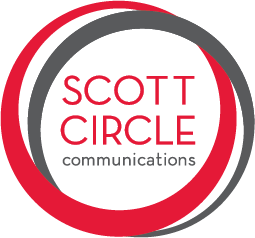The ROI of Research: 4 Questions Nonprofits Need to Answer
Typically, engagements with my clients in the nonprofit sector follow a similar pattern. I recommend some sort of formative research at the beginning in order to inform the messages, strategies, and tactics we’ll use to help them reach their goals. Then I’ll suggest evaluative research during and after the campaign to measure our results. Invariably, clients seize on the evaluation metrics; they want to know that the time and money they spend on strategic communications is actually giving them a return on their investment. But too often, clients pass on conducting message testing, in-depth-interviews with stakeholders, polling, and focus groups up front, thinking that research is too expensive and unnecessary because they already know their audiences and how to reach them.
I’d have to do the research to prove it, but I hypothesize that they are wrong on both counts.
Anecdotally, every bit of research I’ve undertaken in 20+ years has tested assumptions, uncovered new opportunities, and offered insights for how to be more effective. I’d also argue that investing in research saves clients money in the long run. Instead of throwing the proverbial spaghetti at the wall and hoping something sticks, research lets communicators take careful aim at a target and increase our chance of hitting the mark.
In a perfect world, clients should invest in research to answer four fundamental questions:
Whom am I trying to reach?
Communications is about delivering messages to audiences. But audiences are not homogenous. There is no “general public” or, as one client responded when asked whom they wanted to target—“all people on Earth.” The people reading this post, working in your office, living in your city—all represent a wide range of demographics, political affiliations, cultures, and genders. As such, they hold unique and different knowledge, beliefs, and attitudes. Using a one-size-fits-all approach won’t succeed in educating or persuading audiences. The more we can learn and understand whom we are talking to, the more narrowly we can define and segment those audiences. And the more we can segment our audiences, the better we can design messages that will resonate with them.How do I talk to them?
As communicators, we have to speak in our audience’s language—literally and figuratively. If I try to reach Latino communities with public health messages that are only in English, I’m likely to leave out many of the very people with whom I need to connect. Wonky jargon that works with policymakers on the Hill probably won’t translate for the average suburban mom. Communicating with audiences using language they understand and examples they can connect with opens the door to ultimately raising awareness and changing behavior.Where can I find them?
Our messages have to meet people where they live. Are the people I’m trying to reach watching Hannity or Maddow? Do they follow ESPN or Refinery 29 on Instagram? Are they a teenager who will never open an email blast from a college admissions office or an older person who prefers to get a print copy of his or her insurance plan details in the mail? Choosing the right channel for the right audience is crucial. I could know all there is to know about my audience and come up with messages that speak to them in a really profound way, but if I put those messages in places where my audience will never see– them, all of that knowledge doesn’t matter.Did I get through to them?
Nonprofit groups want and need results. Most of these organizations are wholly dedicated to furthering a particular cause or mission, so communicators need to be able to demonstrate success in having done just that. Research can help us answer questions like “Did the audience understand me?” “Did they do or learn what I wanted them to?” “If not, why not?” “What could I change to be more effective in the future?
Strategic communications is complicated. Practitioners have to get all the pieces right to reach their target goals. Research can help improve our chances of hitting the bull’s-eye.
This article was originally published in Guidestar.
Photo Credit: Pexels on Pixabay
